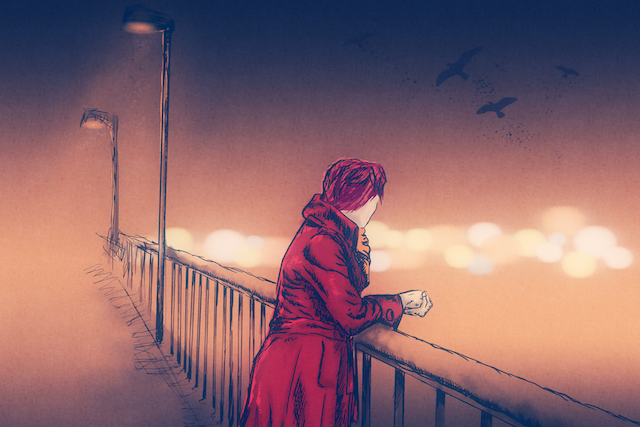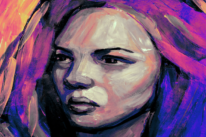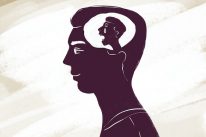
“Sometimes pain is the teacher we require, a hidden gift of healing and hope.” ~Janet Jackson
I was becoming more and more confused as to what my feelings were toward my husband. Longing for that personal adult male connection, I started to feel trapped in my marriage. However, I still had a very strong sense of our family unit and my commitment to it.
I wasn’t going to do anything to jeopardize the family, even if it meant sacrificing my personal happiness. I made a conscious decision that my life was enough. It wasn’t perfect, but it was enough.
However, within a few months, I knew in my heart that my husband and I were further apart emotionally than even I could accept or ignore any longer. I had to address it, but I had to do it carefully. I wanted to make sure my husband understood that I still loved him; we just needed to work on some things. I believed it would make both of us happier.
I found time one night after dinner. We had just finished cleaning up the kitchen and were standing by the counter. The mood was relaxed and we had some privacy; the girls were busy working on their homework upstairs. It seemed as good a time as any.
I took a deep breath and blurted out, “I think we are not as close as married people should be.”
My husband looked at me funny, first a little quizzically as if he didn’t understand what he had just heard. Then his face relaxed and a look of release washed over it. His response shocked me to my core.
“I agree,” he said with relief. “I haven’t loved you for a long time. I was just pretending.”
“What? What did you just say?!?” I stammered, feeling as if I couldn’t catch my breath.
His words were suffocating. I stood there, motionless, as a torrent of emotions raged inside of me. I looked into the eyes of the person I thought I knew completely, that I had trusted without question. A cold, damp feeling of dread came over me. He was the person I thought loved me unconditionally, the one that I had built my life with.
What did he just say?
Now, I wasn’t expecting flowers and chocolates. But I wasn’t expecting that. I was expecting his response to be more along the lines of “I agree. I feel it too. What can we do about it?”
I was astonished. I was numb. I cried. I pleaded for some explanation. He had none. He said he would have gone on pretending forever, but since I dared to bring it up, he was able to finally be honest. We briefly tried marriage counseling, but his mind was made up. He didn’t love me. He was sorry. He felt guilty for the pain he was causing the girls and me, but he didn’t love me.
We were divorced within the year. Everyone marveled at how civil we were. How well I was handling everything. I went into survival mode during the divorce proceedings.
I had to protect my children emotionally. All of my strength went into doing that. I had to stay calm. I knew they were watching me. I tried not to argue. I tried to act normally. Really, I tried.
I also had to financially protect myself and my children. There were so many things to think about. How could I stay in the house with the kids? They were in high school by then and I didn’t want to uproot them. How could I pay for college? We were just getting by with two salaries and one house. How could I make this work? We eventually figured the financial part out. In comparison, that turned out to be the easy part.
He moved out, we got divorced, and then I fell apart.
This experience exposed some very deep wounds within me. Wounds I had that for many years had been scabbed over. Deep, thick scabs that protected me and allowed me to pretend they weren’t there. Now, without warning, they had been ripped wide open.
Wounds are funny things. We all have them. We respond from them, sometimes consciously, but many times not. They affect our thoughts and behaviors even when we’re not aware of it. If we look close enough we can even see others’ wounds in their actions.
Some wounds can lie dormant for many years and only return to taunt us when we are faced with the very thing that wounded us. And the funniest thing of all is that wounds don’t heal on their own, regardless of how much we pretend they are not there. We have to heal them ourselves.
My personal wounds had to do with self-love and my relationships with others. And they were deep, deeper than I had ever realized. When they resurfaced, I was surprised not only by their presence but by their intensity. There had been signs through the years, but they were easy enough to ignore.
My wounds might surprise you. I believe most people consider me to be a smart, attractive, capable woman with many accomplishments in my life. “Capable” as a nice way to say assertive or a take-charge kind of woman.
But there is also another side to me, a side that has deep-rooted feelings of not being “good enough” or not being “worth the effort”. My thoughts would go something like “I’m pretty, just not pretty enough. I’m thin, just not thin enough.” I’m smart, but intelligence wasn’t something celebrated in a girl growing up during the sixties and seventies. We were told to make sure we weren’t smarter than our future husbands, because men didn’t find smart women attractive, and God forbid of all things, don’t be capable.
But the traits not celebrated were the ones I clung to. I believed they were all I had to offer. I was the smart and capable one. My intellect and the sheer force of my will allowed me to succeed in most endeavors. I became goal-oriented and proved my worth by accomplishing my goals. I never allowed myself to fail, because success was expected, it was the only thing that I believed validated me.
That, however, didn’t translate into healthy personal relationships. I didn’t find value in myself as a whole person, so in turn, I never believed that the whole of me could be embraced, cherished, and loved. I was the only the “smart” and “capable” one.
Why couldn’t I love myself? Why didn’t I feel I was worth the effort? Why didn’t I see the whole person and celebrate my strengths, laugh at my weaknesses, and cherish the little girl in me that was just doing the best she could?
Eight years ago, I didn’t know. Today, after having lived through deep pain and more personal self-reflection and inner work than I care to admit, I believe I have some understanding of the larger journey.
Pain was my catalyst. Deep, aching pain that stopped me in my tracks and made me choose between exiting this lifetime (yes, I considered it) and seeking deeper answers to heal the ball of hurt I had become. I chose to seek deeper answers and that was the beginning of my spiritual journey.
Over the years I have learned to open my heart to myself and look at my experiences with a wider lens. I see my divorce and subsequent pain and depression as a gift that transformed my life and me along with it.
I’ve traveled back into my childhood and identified the core trauma that I experienced that shaped the personality (the smart, capable, one) and the embedded belief (I had to succeed to have value) from the essence of who I am. That took a lot of work because the personality traits and beliefs we create are so intertwined into who we think we are that it is difficult to separate them, as they have been ‘us’ for our whole lives.
In our defense, much of the ‘less than’ beliefs we hold are a result of the negative, punitive language that is deeply embedded in our religious and spiritual constructs. Many of us have come from a traditional religious belief system of ‘original sin and karma that we need forgiveness for’ and move to a spiritual belief system of ‘we need to learn our lessons and repeating our lessons until we finally get them.’
What if there is nothing to learn and no penance to do? What if everything in life is an experience for us to feel emotion and live from that deep space? That every emotion is an opportunity for us to expand our awareness and embrace the magnificence of who we are.
Deep emotions shake us out of our complacent lives and spur us into action.
In the experience is the emotion and in the emotion is the gift.
Keep digging because the real you is in there.
About Patricia Cagganello
Rev. Patricia Cagganello is an ordained interfaith minister and founder of Sacred Stories Publishing. She is also the co-author of the new book Chaos to Clarity: Sacred Stories of Transformational Change. A powerful book featuring real stories from real people with real pain that experienced real healing. Read heartbreaking and heart-opening stories of transformation shared by over thirty people from around the world.













 Though I run this site, it is not mine. It's ours. It's not about me. It's about us. Your stories and your wisdom are just as meaningful as mine.
Though I run this site, it is not mine. It's ours. It's not about me. It's about us. Your stories and your wisdom are just as meaningful as mine. 